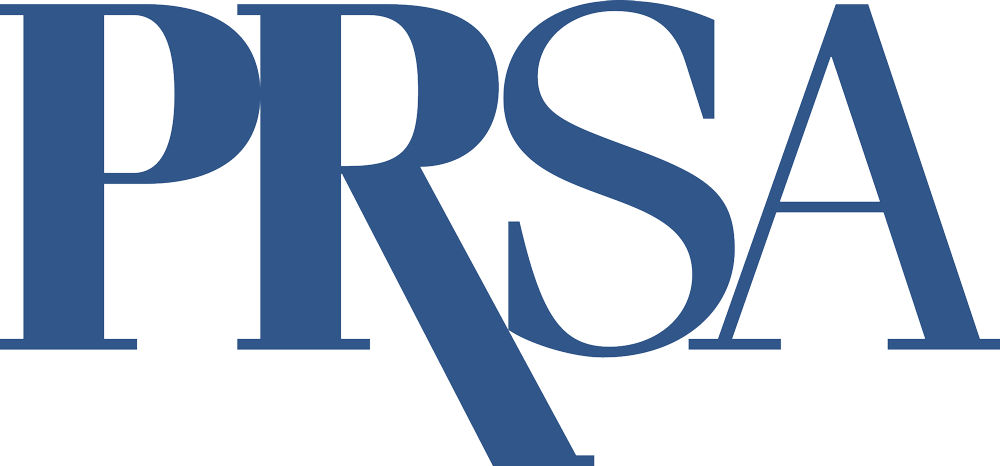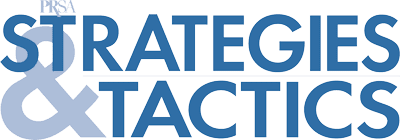Creative Collaborators: How AI Is Driving PR Innovation
By Grant McLaughlin
June-July 2025
Artificial intelligence is transforming public relations, revolutionizing how practitioners craft narratives, reach audiences and measure impact. Companies embracing AI are discovering unprecedented ways to innovate, while those hesitating risk being left behind as the technology becomes industry standard.
The key to success in an AI-driven world is not to compete with machines, but to learn how to collaborate with them. This collaborative approach allows PR professionals to leverage AI’s computational and regenerative power while maintaining the human touch that makes communications most effective.
Algorithms as partners
AI recognizes patterns and gathers data through machine learning, natural language processing and predictive analytics. “AI is a good creative partner since it is fine if it creates 10 bad ideas for every good one that a human can build on,” says Ethan Mollick, associate professor at Wharton School, in a March 2023 post on X. It doesn’t replace human insights and creativity but accelerates it, allowing people to iterate on ideas at unprecedented speeds.
According to the “AI Activated — The Relevance Report 2025,” released by the USC Annenberg Center for Public Relations in December 2024, 71% of PR professionals view AI as extremely or very important to the future of PR, with 54% of respondents seeing AI technology show up in how content is created.
Creativity unleashed
The most innovative PR teams are pushing the boundaries of AI-powered creativity in surprising ways:
1. Hyper-personalized media pitches — PR firms are using AI to analyze journalists’ past articles, social media engagement and response patterns to craft highly personalized media pitches. Their systems identify optimal timing, tone and content angles for each specific journalist, increasing pitch success rates by up to 40%.
2. Predictive crisis simulation — Fortune 500 companies are using AI to run thousands of simulated crisis scenarios based on their industry, history and market conditions. This allows PR teams to rapidly prepare response strategies for situations that haven’t happened yet but show high probability markers.
3. Real-time event adaptation — During live events or product launches, companies analyze audience social media responses in real-time using AI, dynamically adjusting presentation talking points to address emerging questions or concerns as they happen.
4. Visual storytelling AI — Brands are using generative AI to create dozens of visual narrative variations from a single campaign concept, testing which visual stories resonate best with different audience segments before full production.
5. Cross-cultural adaptation — Global brands use AI to not just translate but culturally adapt campaigns across markets, applying metaphors, humor and cultural references that resonate appropriately in each region while maintaining message integrity.
Strategic implementation
Companies can decide how much AI they wish to integrate — from simply using automated media monitoring to reimagining their entire creative process. But timing for any degree of integration is crucial.
“AI is not going to replace humans, but humans with AI are going to replace humans without AI,” states Karim Lakhani, a professor at Harvard Business School who specializes in workplace technology, in an August 2023 Harvard Business Review article. This underscores the idea that PR professionals who leverage AI tools will have a competitive advantage over those who don’t.
According to the Deloitte AI Institute, “AI provides a means to quickly visualize and iterate on concepts, directions that may inspire new creative perspectives — expanding the creative palette. Rather than the threat of replacement, these systems point toward AI empowering creativity. With human and AI in partnership, new artistic possibilities emerge.”
This perspective highlights how AI serves not as a substitute for human communicators but as a tool that extends their creative reach and opens new avenues for expression and engagement.
Integration doesn’t happen overnight. Lakhani advises organizations to “create the sandboxes, run internal boot camps… Give them access to tools, figure out what use cases they develop, and then use that as a basis to rank and stack them.”
The most successful organizations implement AI through phased yet nimble approaches:
- Assessment: Identify innovative bottlenecks where AI could add value.
- Exploration: Test various AI tools with small projects.
- Integration: Incorporate successful applications into workflows.
- Expansion: Scale across teams and functions.
- Evolution: Continuously refine approach as technology advances.
Practitioner checklist: Implementing AI for creative PR
1. Establish human oversight and ethical frameworks. Create guidelines for how AI outputs will be generated, evaluated, refined and approved. Define ethical boundaries for use, including transparency with audiences, avoiding bias and maintaining authenticity. Define who has editorial responsibility and what standards and data security must be met.
2. Identify bottlenecks. Map your workflow and identify areas where AI could remove obstacles or accelerate processes. Look for repetitive tasks that consume creative energy or ideation processes that might benefit from AI-generated stimulus.
3. Select appropriate AI tools. Match specific PR needs with the right AI capabilities. Different tasks require different tools — content generation, sentiment analysis and predictive analytics each have specialized solutions.
4. Develop team training for AI collaboration. Invest in building both technical and conceptual understanding of AI. Focus on teaching effective prompting techniques, output evaluation and ethical considerations.
5. Create metrics to evaluate AI’s impact. Move beyond efficiency metrics to measure the quality and effectiveness of AI-enhanced creative work. Track message resonance, audience engagement and campaign originality.
The future belongs to creative collaborators
AI in public relations isn’t about replacing human creativity, but amplifying it. As Margot Edelman observed in a June 2024 World Economic Forum article, “Creativity and emotional intelligence are irreplaceable in a field that appeals to human tendencies and emotions.”
The most successful PR professionals won’t be those who resist AI or those who rely on it exclusively — they’ll be those who master the art of collaboration with these powerful tools. They will harness AI’s computational and regenerative capabilities to analyze, generate and optimize while applying their uniquely human gifts to infuse communications with emotional resonance, strategic insight and creative vision.
“Communicators and marketers are drawn to and good at what they do largely because of their understanding of human experience, storytelling and creativity,” notes Edelman. These human talents, when augmented by AI’s speed, data processing and pattern recognition, are a formidable combination that will define the next generation of PR excellence.
By thoughtfully implementing AI tools with clear frameworks for human oversight, PR practitioners can unlock creative potential that was previously unimaginable. The future of PR belongs to the creative collaborators — those who embrace the partnership between human ingenuity and artificial intelligence to craft communications that are more intelligent, more resonant and, ultimately, more human than ever before.



